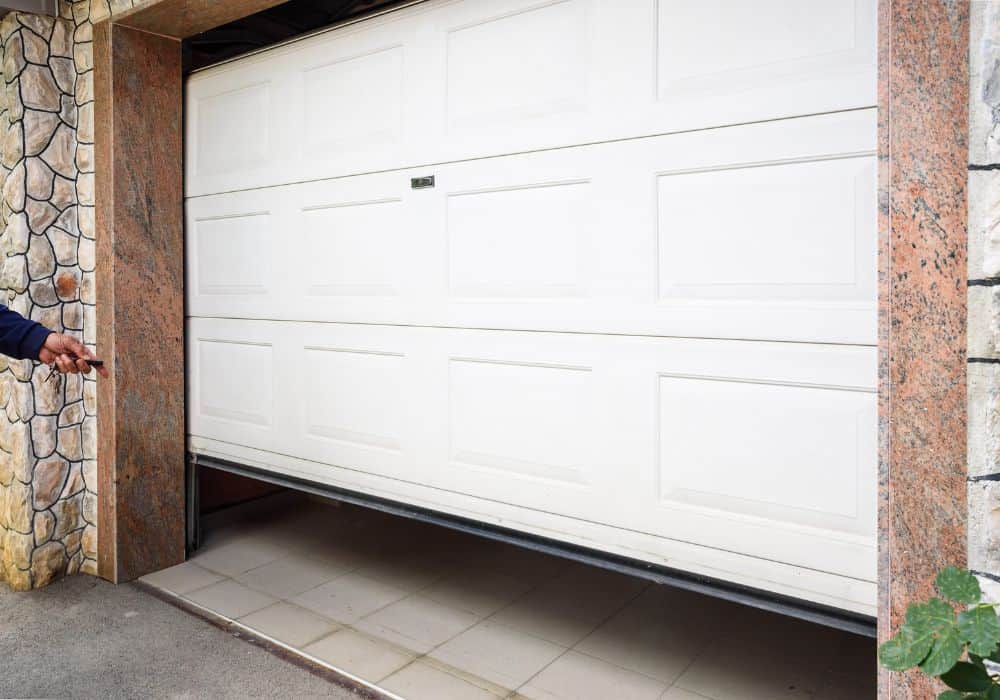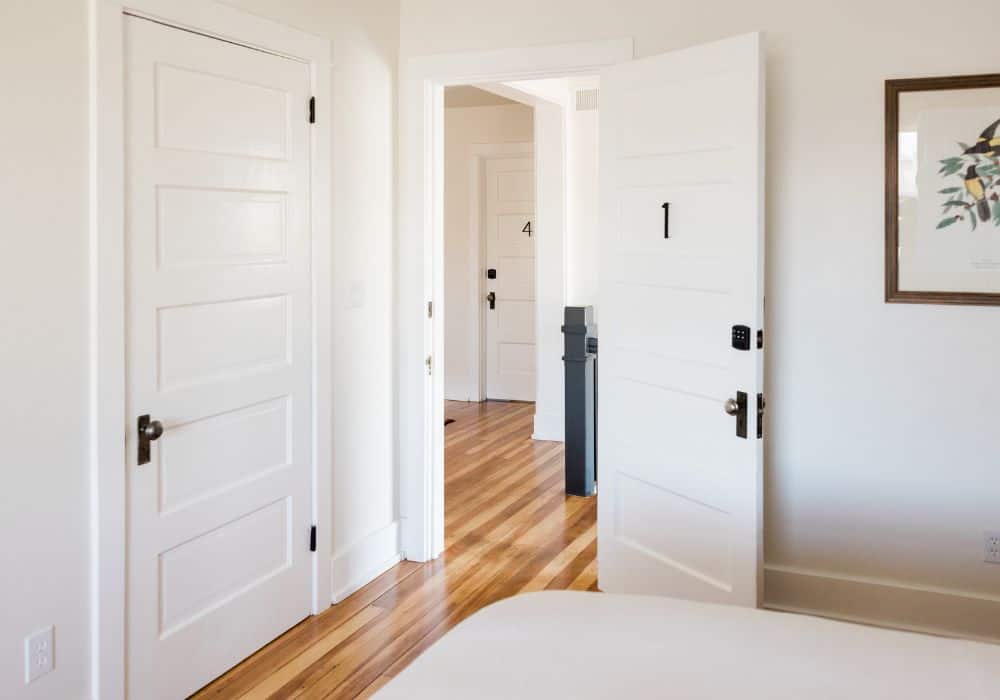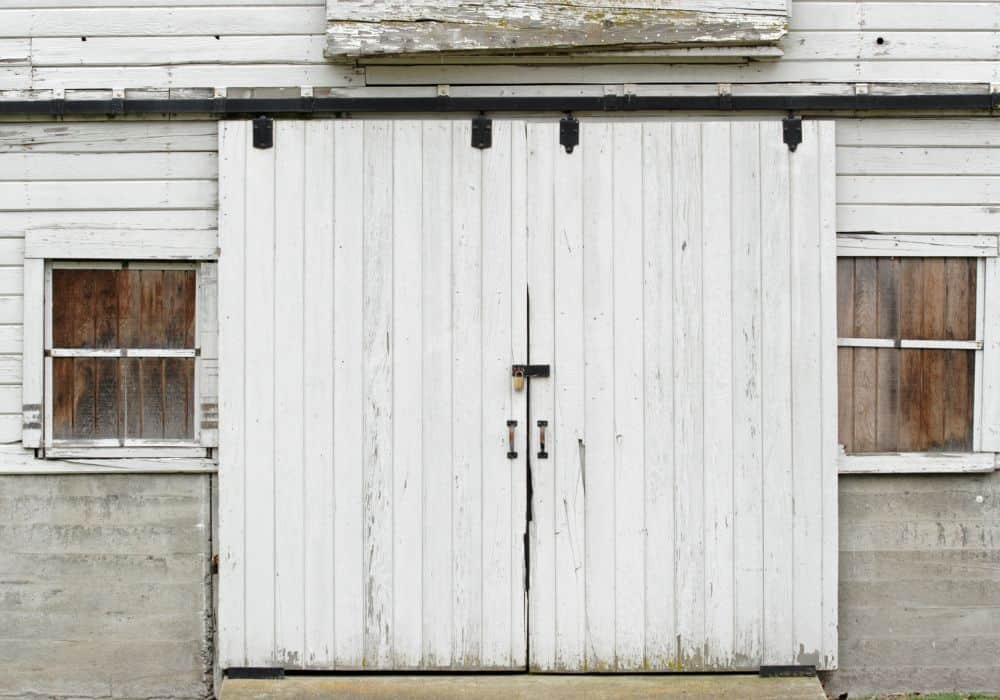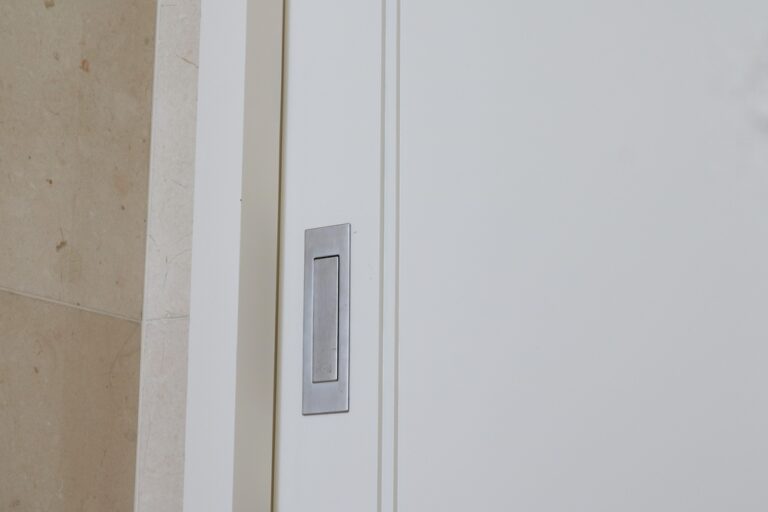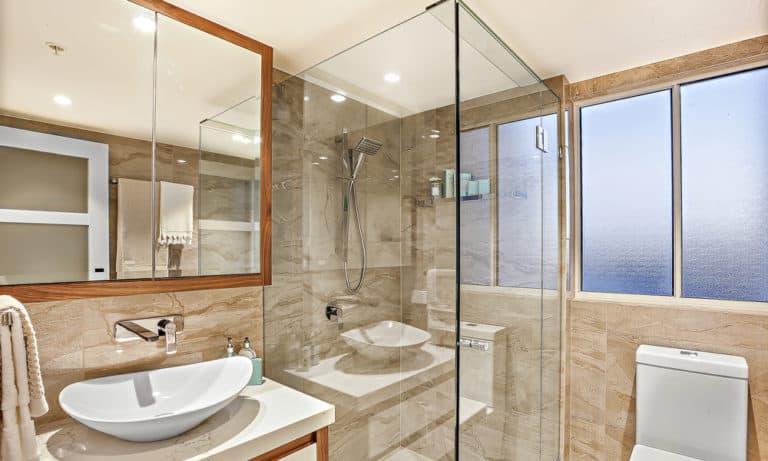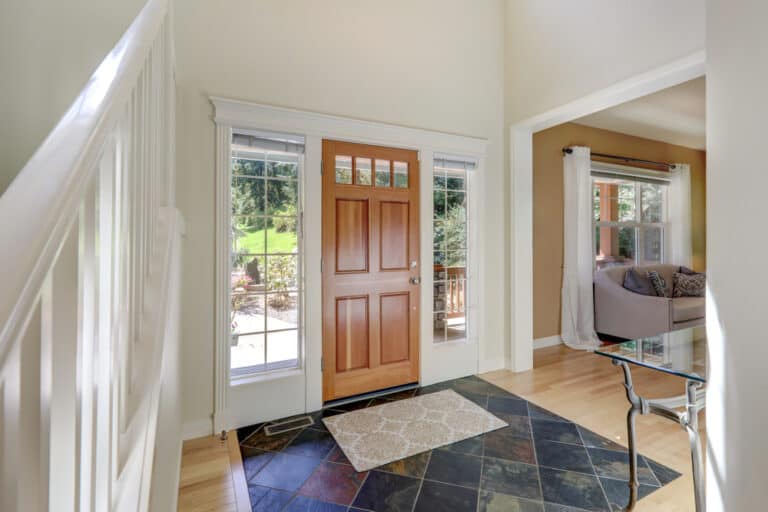Doors are an essential part of any home or business. They should be inviting, classy, and above all else, open and close correctly.
So whether you’re replacing or repairing a door or want to install a brand entry point in your home, finding a door that fits into your home can be relatively easy if you follow a straightforward guideline – standard door sizes.
This article will explore everything you need to know about the measurements of your door. We’ll highlight different door sizes in the industry and how different styles of doors might demand different heights and widths, respectively.
What is the standard door size?
Standard door sizes were developed to help homeowners buy compatible doors quickly and easily. These sizes also ensure that all legislation, such as disability access, is handled smoothly.
On average, the standard door heights measure 80 inches, while standard door widths measure 36 inches. Doors can be slightly different depending on their corresponding doorway.
Below are some common styles of doors that may ask for a slightly different measurement:
1. Standard interior door size
Interior doors connect one room to another, e.g., from our hallway to the living room, a bathroom door, a bedroom door, etc.
These doors often follow a predictable measurement range of 80 inches in height. However, their width can vary depending on the door frame, the house’s age, and the homeowner’s style.
Some interior doors, for example, double or pocket doors, have customized shapes to suit the size of the room it connects with. For that reason, internal door sizes range from as narrow as 28 inches up to 36 inches and more.
2. Standard exterior door size
Exterior doors connect the outside world with our home, e.g., the front door. They are often status doors with intricate designs and shapes and will measure much bigger than any other door type.
While exterior doors typically measure 80 inches across the board, their width can easily extend to 36 inches. They’re often thicker doors to help insulate your home and keep cold air outside.
3. Wheelchair accessible doorways
The Americans with Disabilities Act (ADA) requires a door to be a minimum of 32 inches to accommodate most wheelchair models. It’s an important consideration to keep in mind, especially if you are remodeling an older home or working on a commercial property that is open to the public.
The height of the door should be the standard 80 inches, and accessories such as handles and locks should be no higher than 48 inches from the floor.
If in doubt, consult with your local representatives and legislation to see what legal requirements your door and doorway must meet.
4. Garage Door
This ultimately depends on the size of your garage and when it was built. Newer garages are typically more oversized and boast a much bigger doorway to accommodate bigger cars and space demands.
In general, you can expect a garage door to be, on average, between nine feet wide, by seven feet high. Double garages, which house two cars, will be broader in size, reaching 16 feet or more in many cases.
Quite often, people will order custom door dimensions for their garage, tailoring it to compliment the exterior of their house better. A larger door might look more visibly appealing than something that fits snugly.
5. Pocket doors
Pocket doors are unique designs that see the door slide into the wall cavity of the room. Although they look and seem complicated, in theory, they follow the standard measurements of hinged doors.
Only a few unique factors can influence the size of pocket doors you can install. The most obvious one is space – measure the surrounding wall cavity of the doorframe and see if it can securely hold a sliding door. Also, allow a couple of inches for the roller mechanism to be installed above and below the door.
6. Sliding glass door
Sliding doors can be confusing door to buy because sometimes measurements include the entire doorframe, while others only account for the actual door part. The most common way of size is the complete doorframe.
Sliding doors often follow a standardized height of 80 inches, but their width will vary depending on the design of the doorway itself.
Sliding doors with two panels often average between 60 to 96 inches in width. But if your sliding doors have three panels, the width can increase to 108 – 144 inches.
7. Closet doors
Because they don’t have to follow traditional building regulations, closets and other utility cupboards can vary in size and shape, depending on their position (above or full length), age, and homeowner preference. Older houses with built-in closets typically have smaller, thinner doorways, so they usually need smaller-than-average doors to be installed.
Modern-day closets often measure 28 x 80 inches inside doorways. Some closet doors may act as sliding doors or be the total wall length and thus require custom dimensions to design.
8. French Doors
French doors are an elegant style that can easily work as interior or exterior doorways. They differ from double doors in that they often feature glazed panels on both doors.
Most French doors will reach the standard size of 80 inches in height. But because they are often customized to fit a specific room decor, their width can vary from 24 to 84 inches.
9. Barn doors
Like French doors, barn doors are a type of sliding door with a signature appearance. These doors look rural and rustic, offer unmatched privacy and insulation, and are fast-becoming trendy internal passage doors.
Barn doors typically measure 80 inches in height and 36+ inches in width. Add at least 2 inches to each measurement to ensure your doors will open and close securely.
Expert Tips for Buying & Measuring Doors
- A pre-hung door is a ‘ready-to-go’ door that is very easy to install on most door frames. Door hinges and door knobs are included, and they are an ideal choice to buy for simple door replacements.
- A slab door is a basic, rectangular slab of wood or steel that requires additional craftsmanship (drilling holes, mounting on hinges) to install. They are reserved for crafty homeowners or those who want more design choices.
- When measuring height, start from the top of the door panel until the edge of the door.
- When measuring the door width, it is helpful to take three measurements. First, measure the width at the top of the door frame, the middle, and then the bottom. This will help you see if the doorframe is structurally sound.
- Especially if renovating an older house, consult with the International residential code (IRC) for building codes specific to your area.
- An essential measurement you must consider when buying a replacement door is the door jamb, i.e., the vertical frame parts of the doorway. The jamb takes the weight of the door. Too small a jamb can mean your door falls or fails to open correctly.
- When measuring for the door, allow yourself two inches on both the height and width. This gives you some room to trim the door down to size.
- Styles like French doors often require customization to fit accurately within the doorway. If measuring yourself, ensure your calculations are precise!
- Door manufacturers often have various customizable options to allow you to tailor generic-looking doors to your specific style. They can also offer advice on building regulations and codes to follow.
Conclusion
Whether you’re transforming a single door into something more unique or installing a new entrance, a brand-new door can make your home look refreshed, renewed, and utterly transformed.
And with so many varieties, styles, and materials to choose from, you’ll be spoilt for choice. But measuring your door is a crucial thing you must get right. If the door doesn’t fit properly or doesn’t meet regulations, it will have to go.
Length is often very generic across all door styles, so arguably, the most essential aspect of measuring will be your width. You will need to follow the relevant building codes of your area and address wheelchair and fire safety concerns.
That said, doors offer a wide range of customization options, and you should never feel trapped by standard measurements. Your local supply shops can often give you various customization options to ensure your new door stands out.
If you have any questions about what sized door you should buy, please leave a comment below. But if in doubt, remember:
- The standard door frame size measures 80 x 36 inches.
- Many jurisdictions require a minimum width of 32 inches to allow for wheelchair access
- Some styles, like garage or sliding doors, may measure significantly wider than the door frame.

